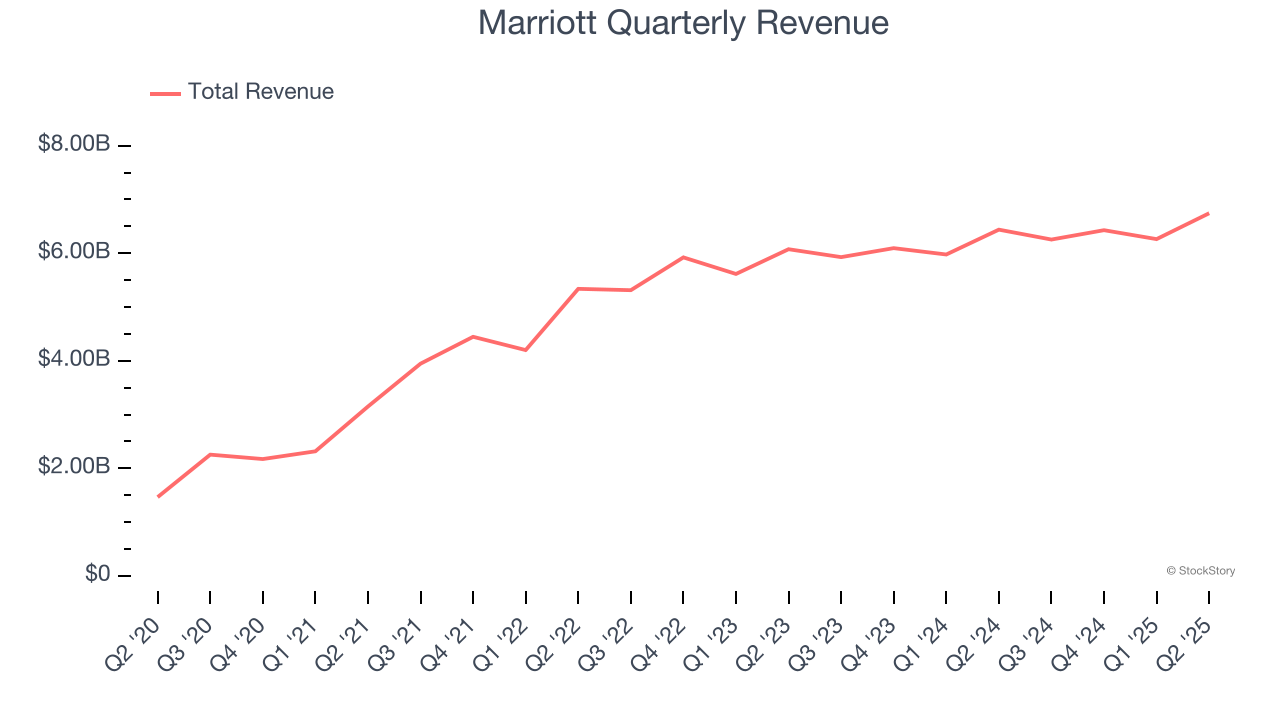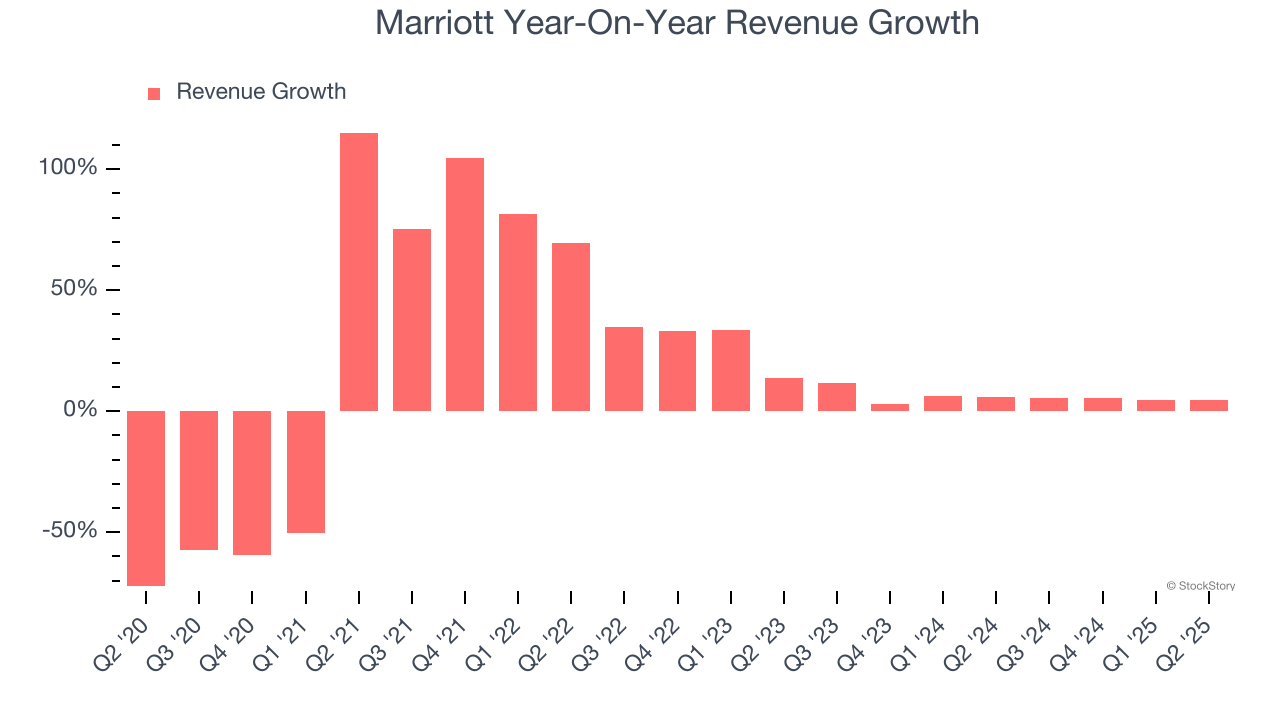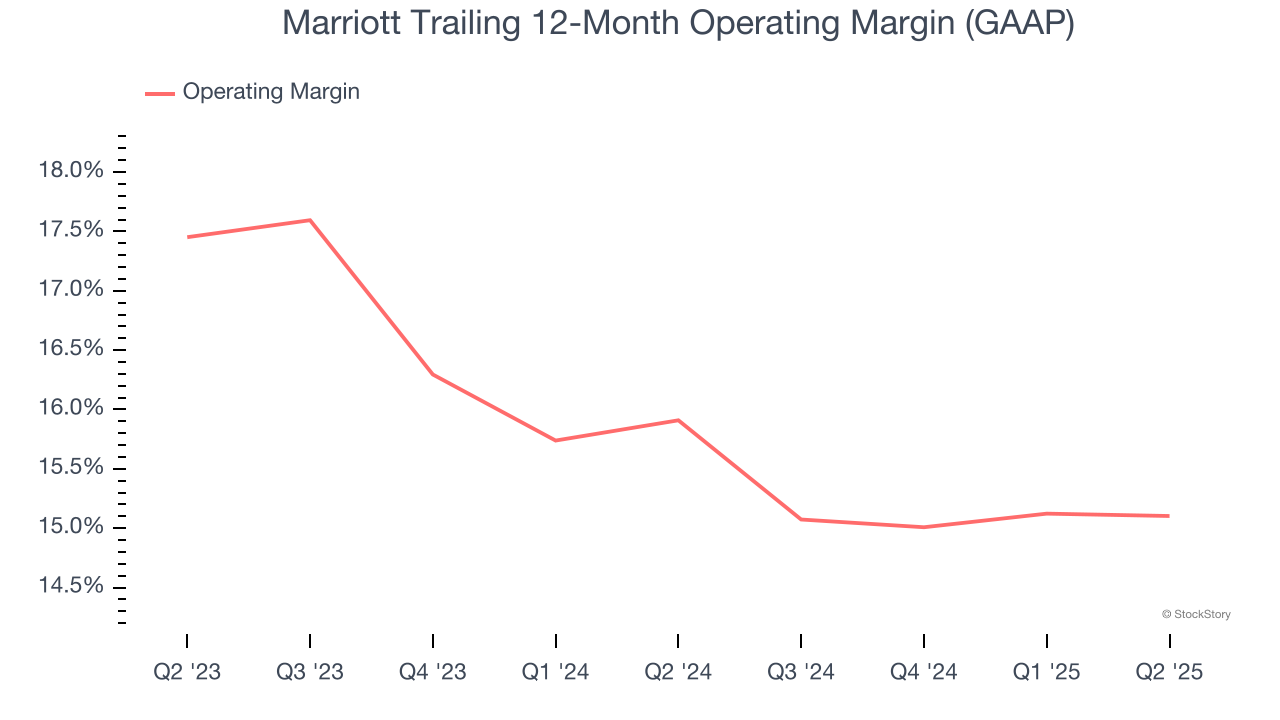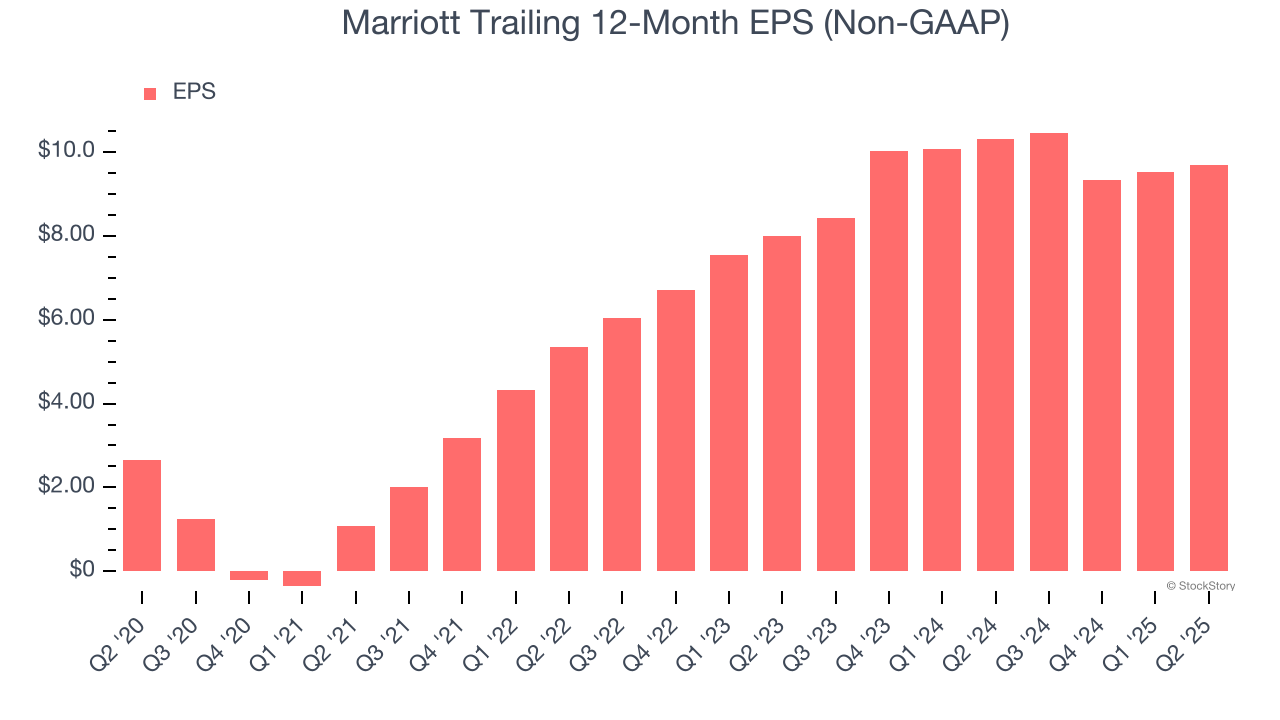
Global hospitality company Marriott (NASDAQ: MAR) beat Wall Street’s revenue expectations in Q2 CY2025, with sales up 4.7% year on year to $6.74 billion. Its non-GAAP profit of $2.65 per share was 1% above analysts’ consensus estimates.
Is now the time to buy Marriott? Find out by accessing our full research report, it’s free.
Marriott (MAR) Q2 CY2025 Highlights:
- Revenue: $6.74 billion vs analyst estimates of $6.66 billion (4.7% year-on-year growth, 1.2% beat)
- Adjusted EPS: $2.65 vs analyst estimates of $2.62 (1% beat)
- Adjusted EBITDA: $1.22 billion vs analyst estimates of $1.38 billion (18% margin, 12% miss)
- Management reiterated its full-year Adjusted EPS guidance of $9.97 at the midpoint
- EBITDA guidance for the full year is $5.35 billion at the midpoint, in line with analyst expectations
- Operating Margin: 18.3%, in line with the same quarter last year
- RevPAR: $142.78 at quarter end, up 5.4% year on year
- Market Capitalization: $70.97 billion
Company Overview
Founded by J. Willard Marriott in 1927, Marriott International (NASDAQ: MAR) is a global hospitality company with a portfolio of over 7,000 properties and 30 brands, spanning 130+ countries and territories.
Revenue Growth
A company’s long-term sales performance is one signal of its overall quality. Any business can put up a good quarter or two, but the best consistently grow over the long haul. Unfortunately, Marriott’s 8.9% annualized revenue growth over the last five years was sluggish. This was below our standard for the consumer discretionary sector and is a rough starting point for our analysis.

We at StockStory place the most emphasis on long-term growth, but within consumer discretionary, a stretched historical view may miss a company riding a successful new property or trend. Marriott’s recent performance shows its demand has slowed as its annualized revenue growth of 5.9% over the last two years was below its five-year trend. 
We can dig further into the company’s revenue dynamics by analyzing its revenue per available room, which clocked in at $142.78 this quarter and is a key metric accounting for daily rates and occupancy levels. Over the last two years, Marriott’s revenue per room averaged 3.8% year-on-year growth. Because this number is lower than its revenue growth, we can see its sales from other areas like restaurants, bars, and amenities outperformed its room bookings. 
This quarter, Marriott reported modest year-on-year revenue growth of 4.7% but beat Wall Street’s estimates by 1.2%.
Looking ahead, sell-side analysts expect revenue to grow 4.5% over the next 12 months, similar to its two-year rate. This projection doesn't excite us and suggests its products and services will face some demand challenges.
Today’s young investors won’t have read the timeless lessons in Gorilla Game: Picking Winners In High Technology because it was written more than 20 years ago when Microsoft and Apple were first establishing their supremacy. But if we apply the same principles, then enterprise software stocks leveraging their own generative AI capabilities may well be the Gorillas of the future. So, in that spirit, we are excited to present our Special Free Report on a profitable, fast-growing enterprise software stock that is already riding the automation wave and looking to catch the generative AI next.
Operating Margin
Marriott’s operating margin might fluctuated slightly over the last 12 months but has generally stayed the same, averaging 15.5% over the last two years. This profitability was solid for a consumer discretionary business and shows it’s an efficient company that manages its expenses well.

In Q2, Marriott generated an operating margin profit margin of 18.3%, in line with the same quarter last year. This indicates the company’s overall cost structure has been relatively stable.
Earnings Per Share
We track the long-term change in earnings per share (EPS) for the same reason as long-term revenue growth. Compared to revenue, however, EPS highlights whether a company’s growth is profitable.
Marriott’s EPS grew at an astounding 29.5% compounded annual growth rate over the last five years, higher than its 8.9% annualized revenue growth. This tells us the company became more profitable on a per-share basis as it expanded.

In Q2, Marriott reported adjusted EPS at $2.65, up from $2.50 in the same quarter last year. This print was close to analysts’ estimates. Over the next 12 months, Wall Street expects Marriott’s full-year EPS of $9.68 to grow 9.1%.
Key Takeaways from Marriott’s Q2 Results
It was good to see Marriott narrowly top analysts’ revenue expectations this quarter. On the other hand, its EBITDA missed and its EBITDA guidance for next quarter fell short of Wall Street’s estimates. Overall, this quarter was mixed. The stock remained flat at $258.77 immediately after reporting.
Big picture, is Marriott a buy here and now? What happened in the latest quarter matters, but not as much as longer-term business quality and valuation, when deciding whether to invest in this stock. We cover that in our actionable full research report which you can read here, it’s free.





